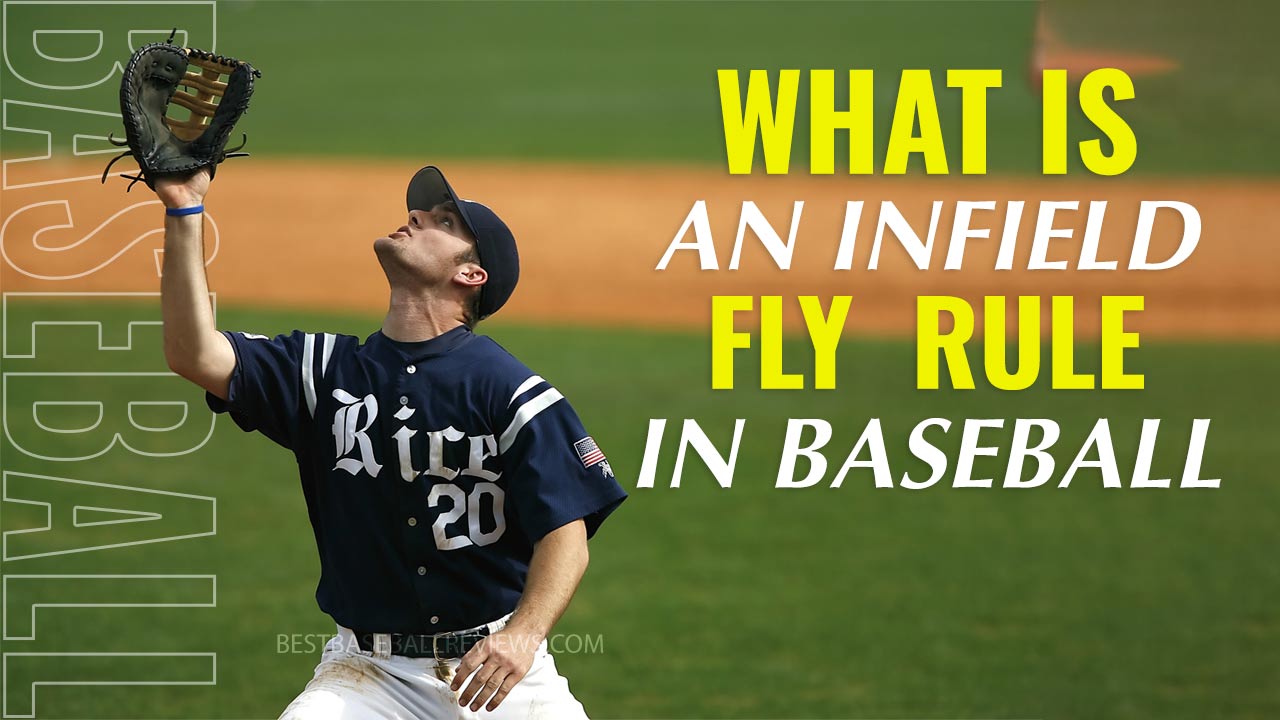Have you been asked, “what is an infield fly rule in baseball” before? And as a baseball enthusiast, did you feel sad that you could not give a detailed explanation about this rule?
Most people claim that it is confusing for most baseball fans. However, this article will give you a detailed breakdown of what this rule entails.
Table of Contents
Infield Fly Rule – Explained
The answer to what is an infield fly rule is that it is a special rule in the game. There are other rules and stats in baseball that you can check out. For example, we have:
and What is Walk-Off in baseball?
This rule is there to stop fielding teams from tricking the baserunners.
It also prevents fielding teams from converting triple or double play from them being a simple pop-out. For those unaware, this rule acts as a judgment call umpires have to make when some factors occur during the game.
However, an odd factor in this rule is that the fielding team gets an out as reward. It is strange because even if they make an unsuccessful catch of this pop-up, they will still get reward.
The infield fly rule is also categorized as a dead ball since it has an additional twist for the runners. If you need to fully understand “what is an infield fly rule in baseball,” there are situations that we must break down for you.
In this fly rule, there are essential elements you need to be aware of, and they include:
- There will compulsorily have to be a minimum of two outs
- A fly ball cannot be grouped as a line drive or a bunt
- The infielder will have to compulsorily catch the ball without any major effort
- Runners must be positioned on either first, second, and third or just first and second.
As we stated earlier, you must fully understand that this infield fly rule serves to protect runners. Please do not mistake it as a reward to the defense.

Since batters are normally ruled out, runners can decide not to advance if the ball stays untouched.
If the infield fly rule is not made, the defense can also let the ball fall to the ground untouched. But, it will not stop there as they will turn it into a simple double-play.
And this will be possible because the runners need to tag up to have the fly ball. Have you seen why the umpires made this rule?
More so, runners are on the first, second, and third base. It is vital because there needs to compulsorily be a minimum of two runners on base for what we call force play.
If the above does not happen, the defense will easily gain no advantage if they let the ball drop. Furthermore, there have to be a minimum of two outs. If not, it will be easy to let the fly ball drop.
Problem addressed by the infield fly rule
In simpler terms, this popular infield fly rule stops the defense from getting benefits when the infielder acts like he wants to monitor a pop-up to catch it.
But he then purposely allows the ball to touch the ground. Note that these infielders can allow the ball to pop out of the baseball gloves. Or, they can leave it on a bounce.
Runners must stay close to the base when the ball is still in mid-air. They have to stay there so the infielder does not catch the ball and throw it back to double them off their base.
With the advent of this fly rule, runners can stay on their base without being susceptible to a force out. Instead, the force out is used when an out occurs, but no player holds the ball but touches the runner with it.
In other news, this fly rule has a connection to force-outs. So, in clearer terms, when the hitter is behind the runner, and the runner will have to get off the base, he (the runner) will need to move off his probably first base to the second base.
It means that, even if runners are on first and second base, the defender that holds the baseball and touches the base before the runner gets there can force the hitters out.
Since it will be termed a force play, a defender will have no reason to tag a runner when he is with the ball or off the base.
Conclusion
Instead of asking, “what is an infield fly rule in baseball” we have given the necessary details in this article. As a baseball enthusiast, you must understand the infield fly rule and why it exists in the first place.



